Our Lady of Victory - Table of Contents
Our
Lady of Victory Basilica and National Shrine
767 Ridge Road, Lackawanna, NY
OLV National Shrine & Basilica - Official Website
HISTORY beneath photographs
2003 Photos
 Postcard ... Note left and right twin colonnandes at corners (detailed at bottom of this page  Watercolor by Hugh Laidman, c. 1975 ... Laidman bio, online March 2021 ... Image courtesy of Jack Edson |
Facade East elevation and facade  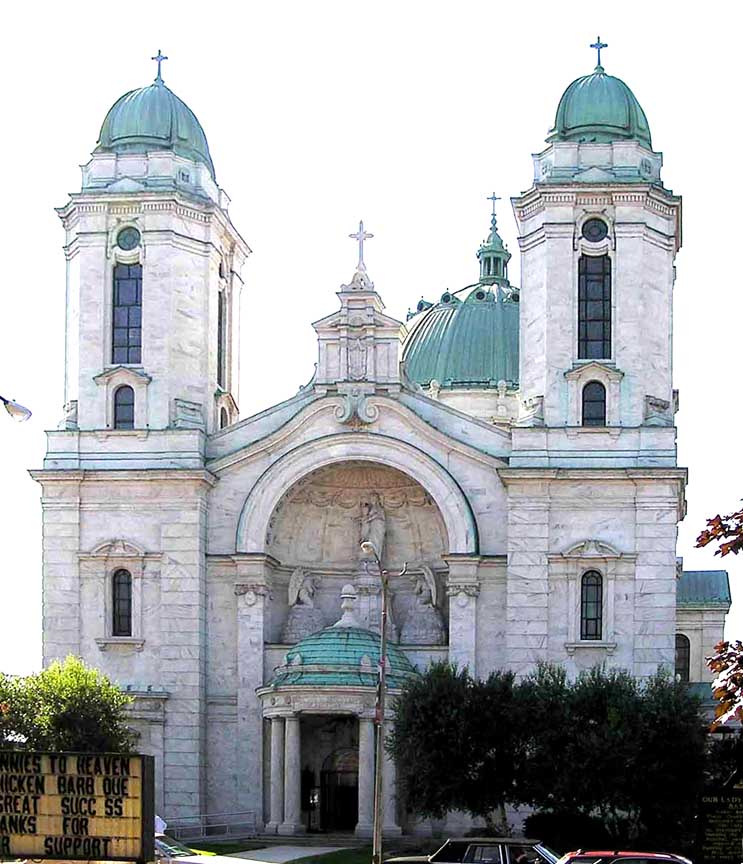 Facade ... Two towers with copper cupolas ... Arched niche with statue ... Main entrance portico 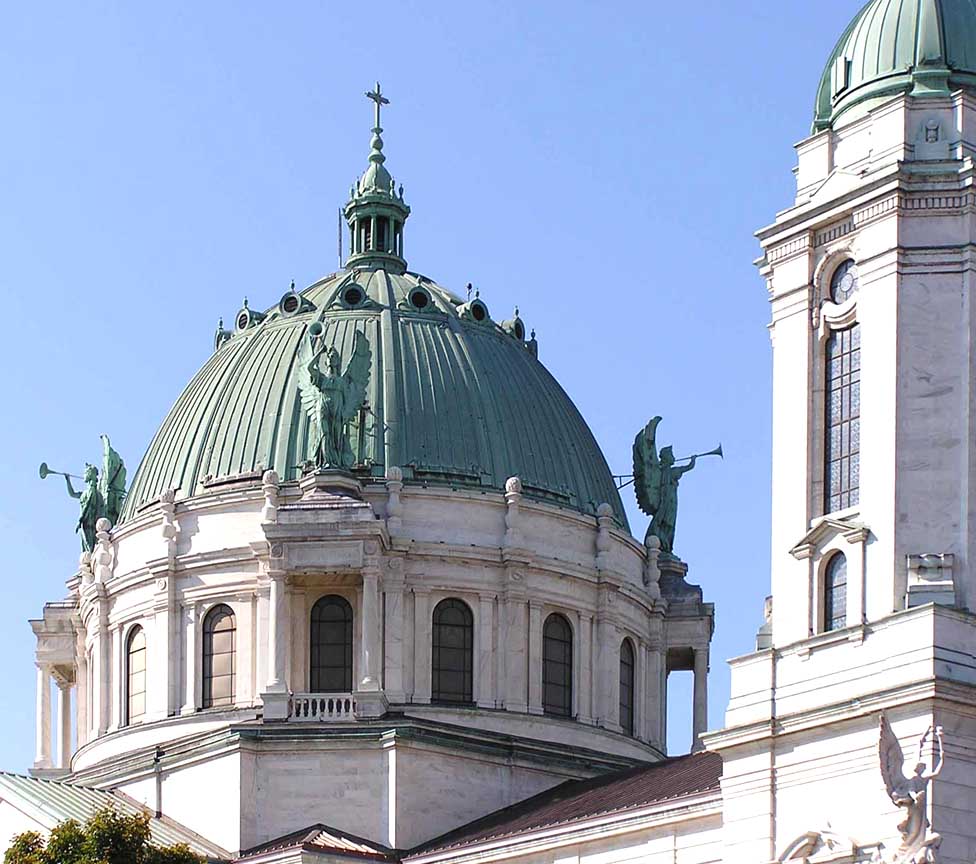 Top: Finial atop the lantern ... Middle: Copper cupola ... Bottom: Marble drum ... The most prominent feature of the Basilica's exterior is the huge copper dome / cupola. ... Measuring in at 165-feet in height, the dome, at the time of its completion, was second in size only to the U.S. Capitol building in Washington, D.C. ... Replaced in 2002  One of four solid copper winged angels -- each 18 feet tall -- sounds its trumpets in the compass's four directions 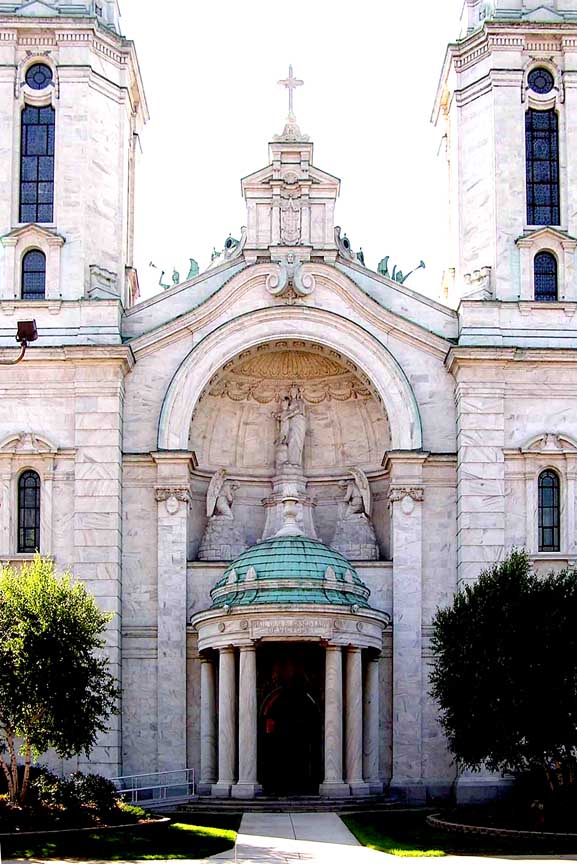 Arched niche with statue of Our Lady of Victory 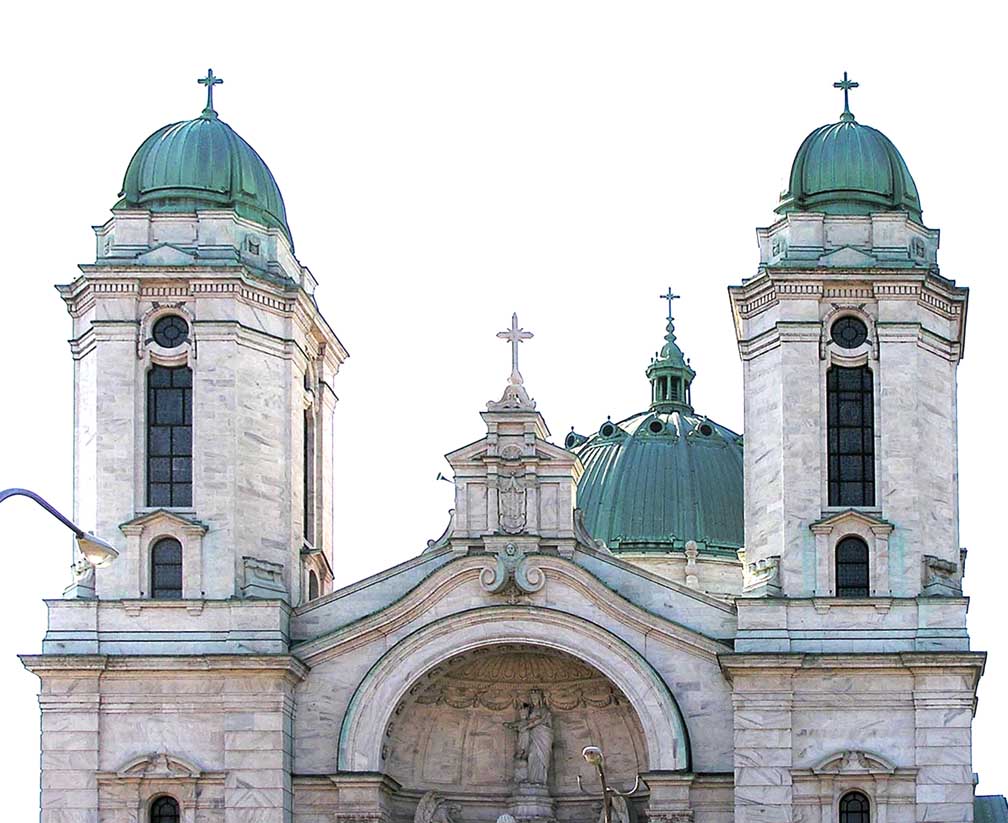 Copper cupolas on twin front towers ... In 1941, a freak and violent lightning storm caused major damage to both the towers, forcing them to have to be redesigned and refurbished. The new towers (the ones that can be seen today) feature a design which mirrors the Basilica's Great Dome.  Tuscan columns support main entrance copper domed portico  A Carerra marble domed niche houses the 12-foot-tall, 16,000 pound statue of Our Lady of Victory   Soffit features rosettes ... Niche background features gadroons, dentils, bas-relief angel faces, and festoons  Coffered soffit features egg-and-dart borders and rosettes  Main entrance domed portico ceiling mural depicts God the Father and creation of the earth ... Triangle behind God symbilizes the Trinity ... "Benedicat": Blessing ... "Deus": God ... "Omnipotens": Having unlimited power or authority ... "Vos": You  Marble ... Broken rounded pediment window surround with urn   Broken rounded pediment with urn  Stained glass window features angel medallion |
South Park Avenue  Left colonnade (when facing the Basilica's front) ... Topping each of twin colonnades is a marble sculpture of a group of children overseen by a large angel ... Colonnade imitates St. Peter's Basilica in Rome   Looking through right colonnade  South Park Ave. entrance ... Swan's neck pediment, including cartouche  South Park Ave. entrance Baroque style sconce 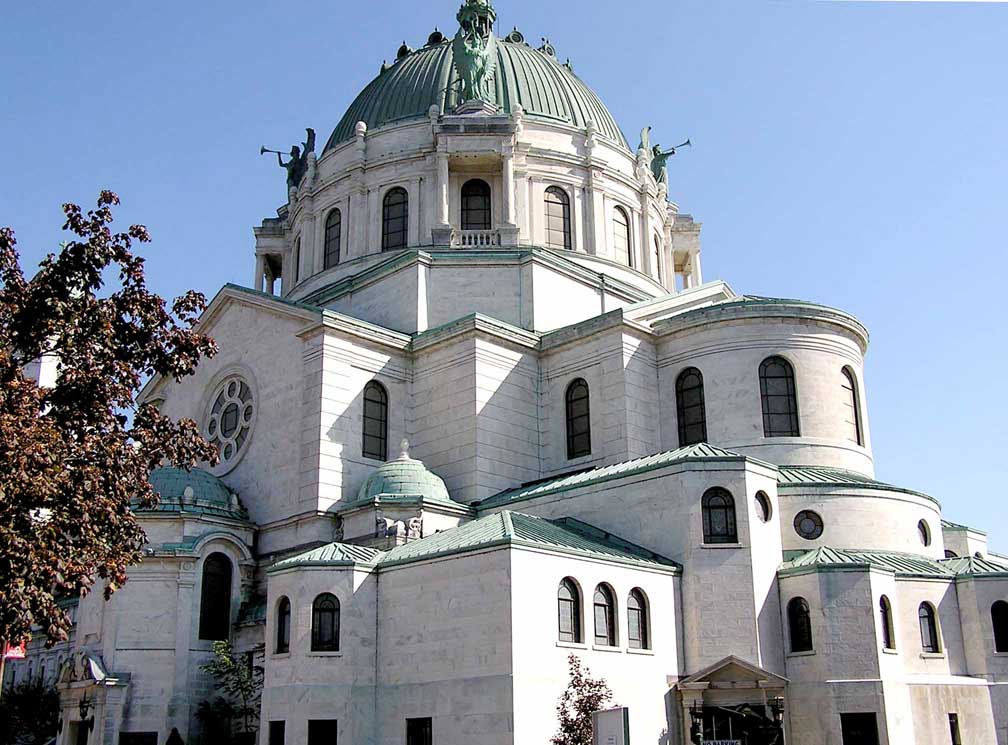 View from South Park Avenue |
|
Partial reprint Our Lady of Victory Basilica: Father Baker's lasting legacy By Jane Kwiatkowski The Buffalo News, Mar 7, 2017 (online April 2021) Nelson H. Baker raised $3.7 million in the early 1920s to build Our Lady of Victory Basilica, the glistening white-marble shrine that sits atop a hill on Ridge Road in Lackawanna. Baker's feat is nothing short of miraculous when you consider the "padre of the poor" collected donations through the mail for a sum that today would be valued at almost $50 million. To help raise the money, Baker also sold $10 bricks of marble that would cost $135 today. It took nearly five years – from 1921 to 1926 – to construct the Baroque-style shrine that pays homage to Baker's spiritual inspiration – the Blessed Mother Mary. It replaced St. Patrick's Church (photo) which was dismantled after suffering heavy fire damage in 1916. As parish superintendent and Civil War veteran, Baker was 79 when construction began. His aim was to create a basilica that was in line with the grand churches of Europe. Materials were shipped from around the United States and Europe to build the 67,500 square foot structure. The exterior marble was cut by the Georgia Marble Co. in Tate, Ga. The structural framework was from Lackawanna's Bethlehem Steel Plant. According to the basilica's website, 46 types of marble comprise the floor, walls, pillars, statues and altars. The rare red marble altar pillars were brought from Spain. The artists who painted the murals, sculpted the statues and painstakingly produced the basilica's 134 stained-glass windows were also members of an international team: -- Architect Emile Ulrich, a graduate of the Academy of Paris, was in Cleveland when the call came from Baker. -- Italian born Gonippo Raggi masterminded the artwork. His oil paintings can be seen throughout the shrine. When he died at age 84 in 1959, Raggi was the subject of a New York Times obituary that credited his work in more than 100 churches on three continents. -- Buffalonian Marion Rzeznik of Poland assisted Raggi. Rzeznik studied sculpture in Krakow, Vienna and New York City. -- Otto Andrle, a Buffalo-native, crafted the stained-glass windows. Some of the over-the-top features that transform the basilica into an art museum are:
A museum occupies most of the lower level of the basilica and offers a look at Baker's life and charitable works. |
